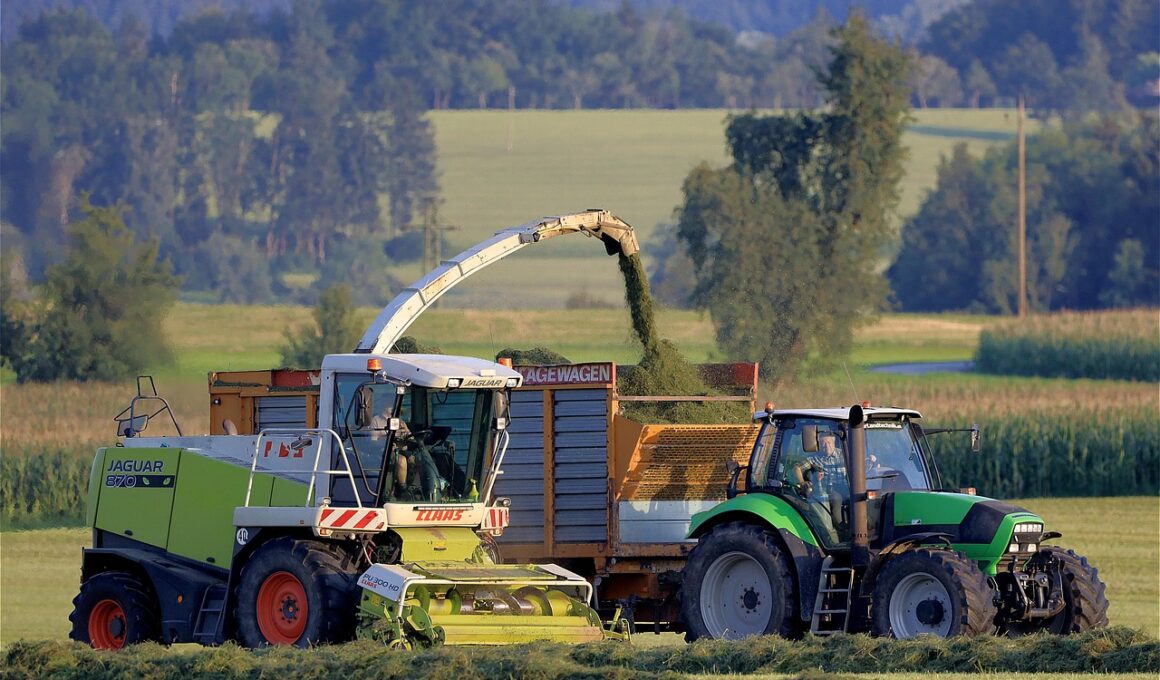Key Agricultural Indicators Driving Market Trends
Agricultural output is heavily influenced by various key economic indicators that reflect the overall health and productivity of the sector. The primary indicators include crop yield, acreage harvested, and commodity prices. Crop yield plays a significant role, representing the amount of agricultural product harvested per unit of land. This is often affected by factors such as climate conditions, technological advancements, and pest management strategies. Furthermore, the acreage harvested informs us about the extent of land utilized for cultivation, which can vary annually based on market demand and crop preferences. Additionally, commodity prices have a direct impact on farming profitability and, in turn, influence farmers’ decisions on what to plant. As these prices fluctuate, they can lead to changes in crop selection and investment in agricultural technologies. Importantly, tracking these indicators consistently can yield insights into emerging trends and help stakeholders in anticipating market shifts effectively. Understanding these economic aspects is crucial for farmers, investors, and policymakers alike to make informed decisions and strategies that cater to sustainable agricultural development.
Another vital aspect influencing agricultural output is the role of government policies and trade agreements. These regulations and international arrangements define the agricultural market landscape. Subsidies, tariffs, and trade agreements can dramatically affect the pricing and competitiveness of agricultural goods. For instance, subsidies may encourage farmers to produce certain crops, which can lead to an increase in the overall output of those commodities. On the other hand, tariffs imposed on imported goods can protect local farmers by making foreign products less competitive. Moreover, free trade agreements facilitate international trade and can create new market opportunities for agricultural exports. Tracking government policies is crucial for understanding how they affect domestic and global agricultural production. Changes in these policies can create uncertainty within the market, prompting farmers and investors to adapt their strategies accordingly. Additionally, ongoing discussions around sustainability and environmental practices are shaping future agricultural policies, emphasizing the need for eco-friendly farming methods without compromising output. Consequently, stakeholders must remain aware of both local and international policy changes and their implications for agricultural output.
The Impact of Climate on Agricultural Output
Climate change presents a pressing challenge to agricultural output worldwide, as its effects are felt across the entirety of the sector. Weather patterns, such as rainfall variability and temperature fluctuations, can have significant impacts on crop productivity and livestock health. For instance, drought conditions may lead to reduced yields or even crop failure, while excessive rainfall might cause flooding and soil erosion, negatively impacting harvests. Furthermore, the increasing frequency of extreme weather events represents a major risk to agricultural stability. Farmers must adapt their practices to mitigate these risks, incorporating resilient crop varieties and advanced irrigation techniques. Sustainable agricultural practices, such as crop rotation and agroforestry, can help enhance soil quality and mitigate the impacts of climate change. Agricultural output can only truly thrive if there is a commitment to addressing climate issues through innovative solutions and strategies. In summary, proactive measures must be adopted at both the policy and practice levels to ensure the continued sustainability of agricultural production in a changing climate.
Technological advancements are transforming agricultural practices, leading to enhanced output efficiency and productivity. Innovations such as precision farming, biotechnology, and automation are being embraced by farmers worldwide. Precision farming employs data-driven techniques for optimizing inputs, effectively utilizing resources while maximizing yields. This approach minimizes waste and increases profitability, making it a vital component in modern agriculture. Additionally, biotechnology has introduced genetically modified organisms (GMOs) that are engineered to resist pests and diseases or to tolerate adverse environmental conditions. The use of such crops can lead to increased agricultural output and sustainability. It is essential to note that while technology can vastly improve productivity, understanding its implications on health, environment, and market dynamics must be a priority. Moreover, advances in automation allow for enhanced labor efficiency, reducing the manpower needed for various agricultural tasks. As the agricultural sector becomes increasingly reliant on technology, it is critical for stakeholders to stay abreast of technological developments, assess their potential benefits, and address any concerns associated with their adoption in the industry.
The Role of Market Demand
Market demand significantly shapes agricultural output, as consumer preferences directly inform production choices. Understanding the shifting demands for organic products, local produce, and specialty crops can guide farmers in making informed decisions regarding their planting strategies. As the global population grows, the need for food security also intensifies, requiring adaptive strategies in agriculture to meet consumer needs while ensuring sustainability. The demand for plant-based diets is rising, impacting the production of staple grains, fruits, and vegetables. This shift towards more sustainable food choices encourages farmers to diversify their crop production. Additionally, factors such as health trends and culinary influences can reshape consumer preferences over time, necessitating farmers to be adaptable and responsive to these changes. Market research can aid in forecasting demand, helping farmers align their offerings with consumer expectations. Establishing direct relationships with consumers through farmers’ markets or community-supported agriculture programs can also enhance market reach and stability. In doing so, farmers can increase their resilience amid fluctuating market conditions, ensuring that they can maintain profitability and sustainability in their agricultural practices.
Global trade dynamics play a crucial role in influencing agricultural output as countries depend on exports and imports to meet domestic needs. The interconnectedness of the global economy means that agricultural productivity in one nation can directly affect markets and prices worldwide. For instance, if a major exporting country experiences a decline in yield, it could lead to increased global commodity prices, impacting importing countries severely. Thus, understanding trade relations, tariffs, and regulations is critical for farmers and stakeholders. Additionally, emerging markets present new opportunities for agricultural output expansion; as populations grow in developing countries, so does the demand for food. It’s essential for agricultural producers to build capacity and adapt to these changing market conditions. Moreover, the impact of evolving supply chains and distribution networks can greatly affect agricultural output. Efficient logistics can maintain product freshness and quality, ensuring better market reception. Ultimately, navigating the complexities of international trade requires a strategic approach to ensure successful agricultural output in an increasingly competitive global marketplace.
Conclusion
In conclusion, a myriad of key indicators influences agricultural output, shaping market trends and agricultural practices. Factors such as crop yield, government policies, climate change, technological advancements, and consumer demand play significant roles in determining what and how much is produced. Farmers and stakeholders must stay informed about these elements and be adaptable to changing circumstances in the agricultural landscape. By fostering sustainable practices, leveraging technology, and adapting to consumer preferences, the agricultural sector can enhance output while addressing challenges presented by a growing world population and climate issues. It is paramount to maintain an unwavering focus on innovation and resilience to keep pace with evolving market demands. Policymakers, farmers, and investors need to collaborate closely, ensuring that strategies are aligned with sustainable growth and productivity in farming. The future of agricultural output depends on our ability to navigate these changing dynamics effectively. By prioritizing education and awareness in these areas, we can pave the way for a robust and sustainable agricultural sector that meets the needs of current and future generations.
This article highlights the various factors driving agricultural output which are pivotal for market trends and future growth. By understanding the intricate relationship between these indicators, stakeholders can enhance productivity and resilience in agriculture.


